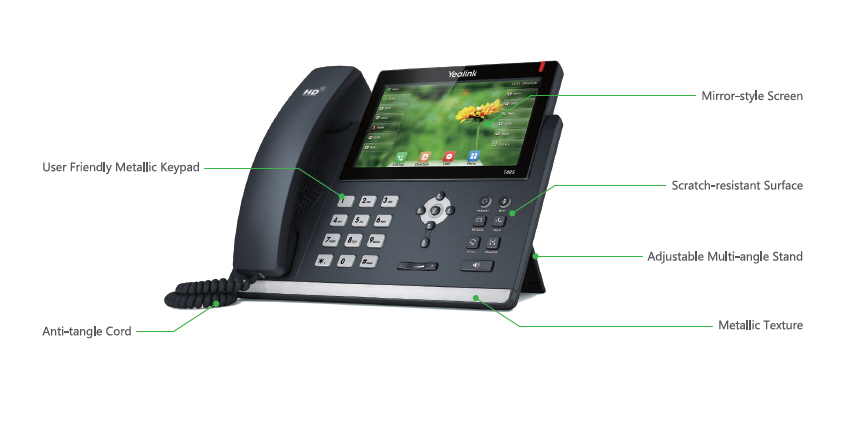Introduction
In the fast-paced businesses phone world of business, communication plays a crucial role in success. With the advent of advanced technology, traditional phone systems have evolved into more sophisticated and efficient solutions. One such innovation is SIP trunking, which has revolutionized modern business phone systems. In this article, we will explore the role of SIP trunking in enhancing communication for businesses of all sizes.
What is SIP Trunking?
SIP (Session Initiation Protocol) trunking is a method of transmitting voice and multimedia sessions over the internet. It allows businesses to make and receive calls using their existing IP network infrastructure, eliminating the need for traditional telephone lines. By converting voice signals into data packets, SIP trunking enables seamless communication between different devices and locations.
Benefits of SIP Trunking
SIP trunking offers several advantages over traditional phone systems:
Cost Savings: By leveraging existing internet connections, businesses can significantly reduce their telecommunication expenses. SIP trunking eliminates the need for separate voice and data networks, leading to lower maintenance costs.
Scalability: With SIP trunking, businesses can easily add or remove phone lines as per their requirements. This scalability allows organizations to adapt to changing business needs without investing in additional infrastructure.
Flexibility: SIP trunking enables businesses to connect multiple locations under a single unified communication system. This flexibility promotes collaboration and improves productivity by facilitating seamless communication between teams.
Enhanced Features: Unlike traditional phone systems, SIP trunking offers a wide range of advanced features such as call forwarding, auto-attendant, voicemail-to-email transcription, and more. These features enhance efficiency and streamline communication processes.
Geographical Flexibility: With SIP trunking, businesses can have virtual phone numbers from different geographical locations, even if they don't have a physical presence there. This allows organizations to expand their reach and cater to a wider customer base.
Implementation of SIP Trunking
Implementing SIP trunking requires a few essential components:
IP-PBX: An IP-PBX (Internet Protocol - Private Branch Exchange) is the heart of a modern business phone system. It acts as the central hub that manages and routes calls within an organization. IP-PBX systems are compatible with SIP trunking, making them an integral part of the infrastructure.
SIP Provider: A SIP provider is responsible for connecting the business's IP-PBX system to the public switched telephone network (PSTN). They provide the necessary connectivity and ensure smooth communication between different networks.
Internet Connection: A reliable and high-speed internet connection is crucial for the successful implementation of SIP trunking. Businesses should ensure that their internet connection can handle the increased bandwidth requirements for voice and data transmission.
Quality of Service (QoS): To guarantee optimal call quality, businesses need to prioritize voice traffic over data traffic. Quality of Service (QoS) settings can be configured on routers or switches to allocate bandwidth efficiently.
FAQs about SIP Trunking
What is the difference between VoIP phone service and SIP trunking? VoIP (Voice over Internet Protocol) phone service refers to the technology used to make calls over the internet. On the other hand, SIP trunking is a specific method of transmitting voice sessions over IP networks. While VoIP encompasses various communication methods, including SIP trunking, it also includes other protocols like H.323.
Can small businesses benefit from SIP trunking? Absolutely! In fact, small businesses can benefit greatly from adopting SIP trunking. It offers cost savings, scalability, and advanced features that were previously only available to larger enterprises.
Is it necessary to replace existing phone systems to implement SIP trunking? No, businesses can integrate SIP trunking with their existing phone systems. SIP trunking allows for seamless integration, making it a cost-effective solution for businesses looking to upgrade their communication infrastructure.

Are there any security concerns with SIP trunking? Like any internet-based technology, SIP trunking can be vulnerable to security threats. However, by implementing proper firewalls, encryption protocols, and regular security updates, businesses can mitigate these risks and ensure secure communication.
Can SIP trunking be used for video conferencing? Yes, SIP trunking supports not only voice calls but also video conferencing and other multimedia sessions. It provides a reliable and efficient platform for conducting virtual meetings and collaborations.
How does SIP trunking improve disaster recovery capabilities? In the event of a disaster or network outage, SIP trunking allows businesses to quickly redirect calls to alternate locations or mobile devices. This ensures uninterrupted communication and enables organizations to maintain business continuity.
Conclusion
SIP trunking has emerged as a game-changer in modern business phone systems. Its cost-saving potential, scalability, flexibility, and advanced features make it an attractive choice for businesses of all sizes. By leveraging the power of the internet, organizations can enhance their communication capabilities and streamline their operations. Whether it's a small startup or a large enterprise, SIP trunking has become an essential tool for staying connected in today's digital https://prwireindia.com/press-release/soundcurve-launches-new-website-and-expands-voip-phone-services-in-oregon-california-and-nationwide world. So embrace this technology and unlock the full potential of your business phone system!